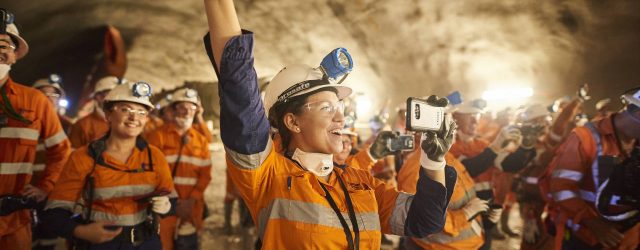Opinion: You can’t pour concrete with one arm
Posted: 4th August 2021
Posted in: ACA News

Posted: 4th August 2021
Posted in: ACA News
Some Sydney construction sites have started with the rattle and hum of just a few workers, while many sites remain closed. This is a far cry from the touted grand re-opening of construction and the issue is not confined to NSW—it is a National concern.
Western Sydney Airport, Parramatta Light Rail, Liverpool Hospital and many other city shaping projects that usually employ thousands of people remain silent as they are located within locked down Local Government Areas. Other sites are struggling to muster enough people to safely operate as over half their workforce is unable to travel. In effect, the restrictions introduced by the NSW Government have tied one arm behind the construction industry’s back.
If sites can’t be operated safely with the available workforce more sites will remain closed.
COVID has devastated so many industries and livelihoods so why make a special case for construction to remain open? Construction is an industry that is all about managing risk. Its record of managing the risk of COVID transmission on worksites is exemplary. Since the start of the pandemic, very few cases have been reported on sites and where incidences have occurred, they have been well managed with almost no spread to the wider workforce. Very few other industries can make similar claims. That’s why, until now, the construction industry has largely continued to operate throughout the pandemic in all states and territories. Sydney’s shutdown has set a concerning precedent.
Since the shutdown was announced, the construction industry has been working closely with government to further tighten the comprehensive COVID operating protocols and procedures already in place. Every construction site must adhere to a strict COVID-safe checklist of measures with one person per four-square-metre rule in effect. Existing measures such as QR codes and sectioning off sites into zones are already part of COVID-safe operating arrangements.
A potential gamechanger for the industry is the introduction of rapid antigen testing, with several members of the Australian Constructors Association about to take part in trials to inform a wider industry roll out. It will allow early detection of cases that would otherwise potentially have gone undetected, resulting in exposure of others to the disease. With such a large workforce, this additional testing could also have a significant positive impact on the management of this and future COVID outbreaks.
With 1 in 10 people in the Australian workforce employed within the construction industry there is a lot to lose. The extended shutdown of Sydney construction sites will not only be felt by site workers but the entire supply chain which crosses borders and is therefore a major national issue. Every day that passes is hurting the industry and delaying projects. Construction is an industry that, in the main, cannot work from home and our blue-collar workforce suffers the most. It is also an industry that cannot just be turned on and off—doing so puts the economy and our way of life at risk. Every $1 spent in construction returns a $3 kick on to the wider economy. That’s why governments around the world have invested heavily in infrastructure as part of their COVID recovery plans.
With safety top of mind, the Australian Constructors Association is calling for a proper re-opening of construction sites in Greater Sydney. We need more hands on deck to deliver the planned pipeline of NSW infrastructure projects and keep the economy moving forward, but this does not need to come at the cost of the safety of the workforce or the wider population. The safety measures in place on the state’s construction sites are comprehensive and robust. Overlay these measures with antigen testing and onsite contact tracing measures, it would be hard to find a safer place to work. A construction worker would be at greater risk of being exposed to the virus from a visit to a supermarket than entering a construction site.
The reality is the risk of COVID transmission on a large project like Western Sydney Airport is slim to non-existent when workers are operating under the strictest safety requirements and in airconditioned cabs of large machines. While a simple example, it demonstrates that there are many instances where work can and should be allowed to continue.
It is time for government to return the industry to the list of authorised workers, allow all projects that can operate safely to do so and to let construction lead the way forward out of this outbreak.
Jon Davies
CEO, Australian Constructors Association